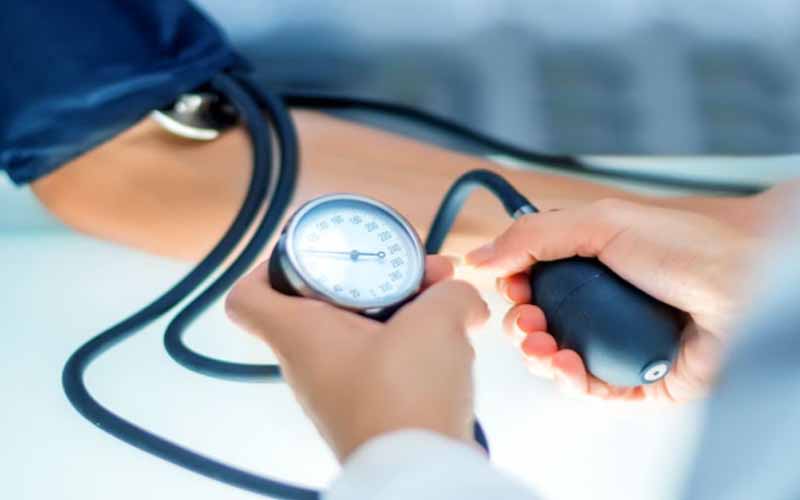Source : heart.org
Abnormal levels of blood pressure are often associated with adults and not children. However, this is not necessarily the case because children are also prone to both high and low blood pressure. This goes to show that paying attention to your child’s health is essential.
Don’t assume just because they are kids they don’t need to lead a healthy lifestyle because some diseases like low blood pressure cannot affect them. To better understand hypotension in children, here are a few things you should know:
Table of Contents
What is Paediatric Low Blood Pressure?

Blood pressure is measured by looking at two determining factors. These factors include:
Systolic pressure
This refers to the pressure in the arteries when the heart pumps blood. It is the topmost number on the blood pressure monitor and the results given to a patient.
Diastolic pressure
This refers to the pressure experienced in the arteries between heartbeats. When the heart is filled with blood and when it is relaxed. It is the bottom number found in the measurements.
Normal blood pressure levels should read between 90/60 and 130/80. Low blood pressure happens when the levels are lower than the normal range.
When it comes to adults, low blood pressure is not a major cause for concern unless it comes with other symptoms.
However, with kids, the situation is different. Low blood pressure in children is a major cause for concern that requires you to get in deeper and find what caused the changes. This will help ensure that the problem is taken care of accurately and on time.
Types of Paediatric Low Blood Pressure

When it comes to low blood pressure in kids, there are three different types that you need to educate yourself about. They include:
Neurally Mediated Hypotension
This condition is also known as NMH. It happens when the body is unable to regulate blood pressure. It especially happens when your child is upright or has been standing for a long time. It causes a 20-25 mm Hg drop in systolic pressure.
The symptoms associated include lightheadedness, syncope( fainting), dizziness, and slow speech. This condition if managed accurately will fade away as the child grows older.
Severe Hypotension
Severe hypotension is closely linked to shock that occurs when your body organs don’t get the required amounts of blood and oxygen. It may present itself when your child has an infection, an allergic reaction, or gets an injury leading to a lot of blood loss.
This condition can be very fatal if not addressed immediately. This is mainly due to the restriction of blood and oxygen. Your body organs depend on the two to function making restriction very dangerous.
Orthostatic Hypotension
Orthostatic hypotension with the inability of your body to quickly respond to posture changes. It presents itself when your child sits or stands suddenly which throws off their body.
It causes a 20 mm Hg decrease in systolic pressure and a 10 mm Hg drop in diastolic pressure. This condition is fairly manageable but could be chronic if left unattended. It comes with symptoms ranging from dizziness, weakness, nausea, and fatigue.
Signs and Symptoms of Paediatric Low Blood Pressure

Knowing the signs and symptoms of hypotension is very crucial. It will help you identify the problem in your child and encourage you to seek medical attention on time. The signs and symptoms include:
- Nausea or vomiting
- Fainting
- Blurred Vision
- Dizziness
- Weakness
- Confusion
If you notice any of these signs you need to consult with your pediatrician and get advice on what could be the cause. If you want to be better prepared, invest in a kid-use blood pressure monitor, and take your child’s readings yourself.
If you notice any drastic drops in either the systolic or diastolic pressure you should book an appointment for a thorough check-up.
Causes of Hypotension in Children

Hypotension in children is caused by a variety of factors. Some that can be avoided and others that you can only manage. These causes include:
Dehydration
This is one of the causes that can be avoided by encouraging your child to drink more water or provide them with foods rich in water.
Sudden posture changes
You should encourage your child to move slower as they change postures to avoid the shock on their bodies.
Arrhythmia
This happens when the heartbeat and rhythm are abnormal. You should take this up with your doctor to avoid any heart diseases.
Anaphylaxis
This factor requires you to be very keen about what your child is allergic to. You need to always avoid whatever they are allergic to by all costs. This is mainly because anaphylaxis is a shock on the body that could be fatal.
Conclusion
Low blood pressure in children is something that needs to be addressed and not neglected. Pay attention to the symptoms and work toward finding the causes. This will help you avoid making the situation worse. Consult with your pediatrician to find ways to manage your child’s blood pressure and keep it at a normal level.






